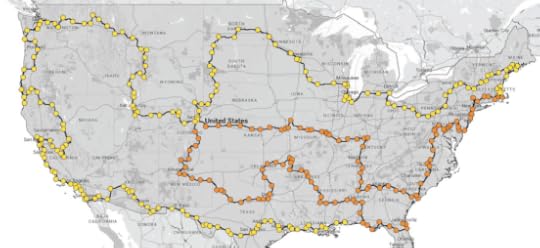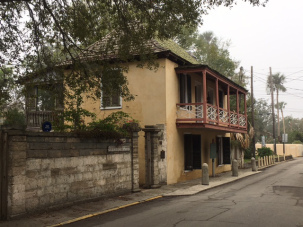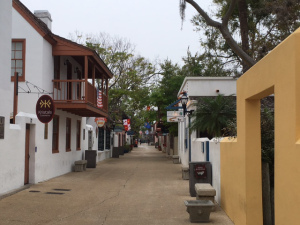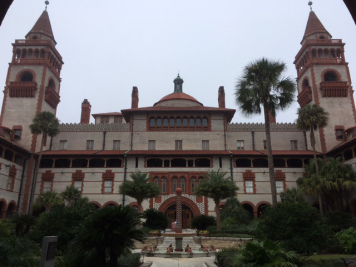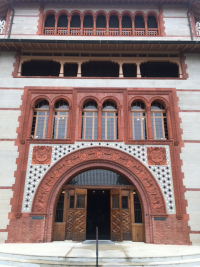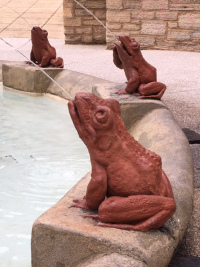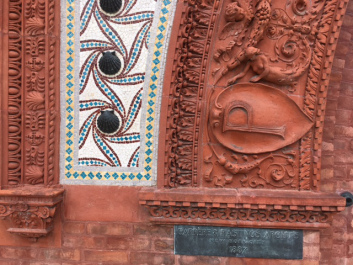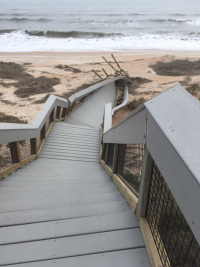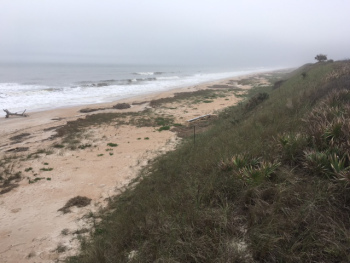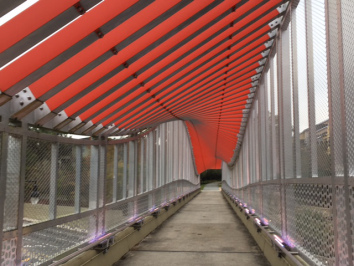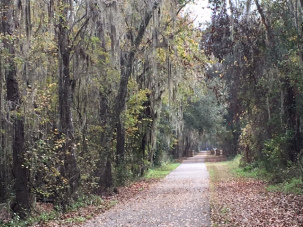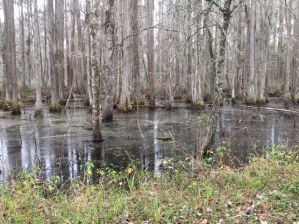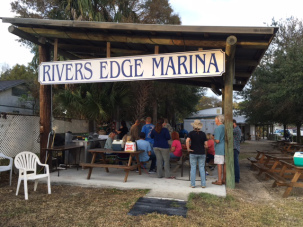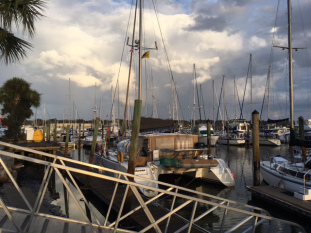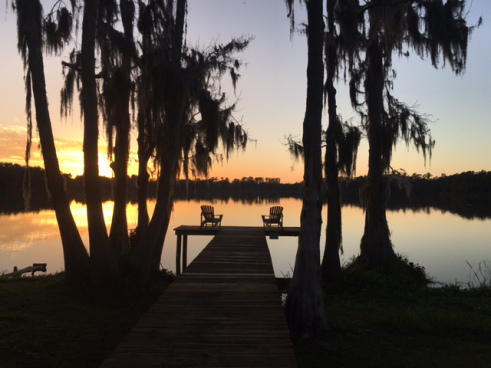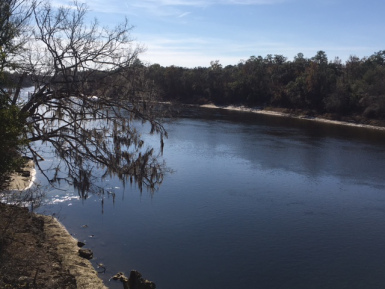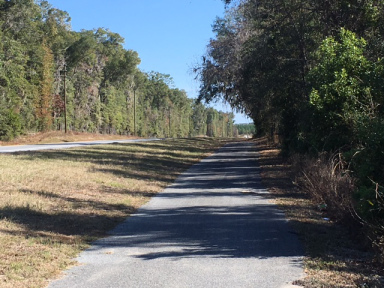Paul E. Fallon's Blog, page 35
December 26, 2017
My Life: Played Out on Broadway
[image error]2017. A lump rises in my throat as my eyes lift to behold Dolly Levi, at the top of the grand stairway at Harmonia Gardens. The audience bursts with applause. Dolly descends in her signature red dress and feather spray. Tears stream down my cheeks. Why am I crying, clapping wildly, at such schmaltz? That’s not just Bette Midler, icon of my generation, shaping a musical theater diva to her own contours. My entire life floats down those steps: every elaborate fancy, every tawdry detail.
1969. Innocence radiates a cloak of security. How else can you explain two fourteen-year-old boys traipsing up Eighth Avenue from Port Authority on a winter Wednesday, seeking a discount matinee? Junkies coil in doorways. Streetwalkers in piranha fishnets flash maternal smiles. They know chubby lads who mime ‘I’m the Greatest Star’ before bathroom mirrors are not promising customers. Even before we know it ourselves. We are too young and too Catholic; we live too many exits down the Garden State Parkway to understand there’s a revolution brewing for boys like us. We just want to see a show.
I can’t recall how we manage to skip school mid-week, or why our mothers let us bus to New York— alone. They exited the city circa 1950, and have no idea how much its glamour has tarnished. With six older siblings between us, each a unique hellion, our parents are frankly too exhausted to monitor Rich and me. We’re good boys, with high grades and quiet voices. We never make any trouble. What trouble we crave, our parents cannot even imagine.
[image error] [image error]Rich and I have no tickets. TKTS doesn’t exist yet. We cruise box offices and beg discounted seats. Pearl Bailey as Dolly Levi at the St. James: last row balcony. First row orchestra at the Majestic for Fiddler on the Roof, so far left our necks get sore. That redhead playing Tzeitel: she’s going places.
2017. This revival of Hello, Dolly! is faithful to the script and music, yet so cleverly updated. The comic bits, the lines delivered direct to the audience; ironic jabs keep everything light and fun, without ever cracking the meat of this chestnut.
1971. My father finally makes good on his abiding fantasy; sells most everything and stuffs what remains into a motor home. He yanks me out of junior year, and unfurls us to Oklahoma. If you think there’s logic in the maneuver, you don’t know my father. But I’m not too upset: I know all the songs from that show.
Oklahoma is good to me. I strum guitar at folk mass. I meet a girl with a constellation of freckles. She’s more than I ever dreamed, more than enough. Innocence preserved, I get scholarshipped to a fancy New England college, in no small part because this Jersey boy is an Okie now, at least on paper. In the first rush of Affirmative Action, I fill a geographic diversity slot. A year later, those freckles follow.
[image error] [image error] [image error] [image error]
Every semester back east includes a Broadway musical. Ain’t Misbehavin’. See Saw. 1776. A few years after the patriotic drumming closes, I sit in the very same theater to witness the original production of Chicago. America’s become jaded.
Rich comes out as a gay man. I’m baffled; he’s not flamboyant.
2017. Dolly sits down to dinner, center stage, with Horace Vandergelder. She launches into the patter of planting marriage in his head. Bette begins with the same verve of so many Dolly’s before her.
[image error]1979. New York is exhilarating; New York is grand. The weekend before Christmas I usher my beloved to The Plaza. Our room may be up in the dormers, but we have a Central Park view. We take in A Chorus Line, first time ever I buy full price tickets. We dine at The Rainbow Room, dance to the live orchestra. Lisa accepts the ring I offer. It’s a ridiculous expenditure for a graduate student, worth every penny. We fly home, engaged. The next year we marry.
We ricochet between Boston and Oklahoma, but New York City forges some of our deepest memories. That first Thanksgiving, short on money with no family nearby, we wake at 3 a.m. drive through the dark, and watch the parade right in front of Macy’s. We enter a deli, order turkey clubs, shuck our knit hats and down parkas. Everyone else is decked in leather: pimps buying their girls, and guys, holiday lunch. I catch a glimpse of fishnets, and remember them fondly.
I hardly see Rich anymore. He’s a hospital nurse, on the evening shift. After midnight, he drives into the city and parties until dawn.
2017. Horace cannot keep things under control. His niece dances a polka with—God forbid—an artist. His clerks carouse in a private dining room, on his dime. He detests this matchmaker, yet he yields, again and again, to her insistent grip. Chaos erupts at Harmonia Gardens. Keystone cops break it all up, though the only crime possibly committed is one man’s folly of being too serious, of denying his heart.
1985. Strobe lights freeze Tommy Tune and Twiggy’s splashy kicks into discrete figures. The effect is dazzling, though all-those-jumpy-images unsettle a man fixed on order and continuity. Lisa and I hold hands during My One and Only, reaffirming our commitment. But outside the theater, our grasp slips. We shoulder on; pursue what we love, raise children we love, try, and try and try to love. But some things cannot be willed. Finally, we go to therapy, dig deep, and expose dissonance beyond all fears. I finally recognize that I’m gay. Not a deal breaker to an Irishman steeped in rigid Catholicism with no sins of the flesh to confess: I would never leave my wife. But Lisa wants more in life than accumulated burden. She leaves me with a hulking house and an even greater volume of guilt. I cannot fathom what she’s done, until years later when I realize: she’s done me a favor.
Rich learns how the virus travels. He stops having sex, cold turkey. Drugs are so easy on the unit he works; a few pills help him forget his inevitable.
2017. The cast stands, wordless, in a cartoonish witness stand cum jury box. They stare at Dolly who, unawares, devours a turkey leg and deviled eggs with the craven gusto of a person who finally finds pleasure, satisfied.
1995. I’m Crazy for You. Harry and I have so much in common, a boy and girl and an ex-wife apiece; two architects who even drive the same model Ford Focus. We hold hands along Coney Island boardwalk on an eerily warm December day, keep holding them throughout Susan Stroman’s choreographic masterpiece. Two guys on the precipice of middle age with so much child support we can’t afford a single night in New York; forget The Plaza. We drive home in the wee hours. We sing out loud the entire length of Connecticut. Have I ever been so happy?
2017. Red dress and feathers notwithstanding, Dolly Levi has evaporated from the stage; replaced by pure Bette Midler, pantomiming gluttony so ferociously my guffaws teeter on guilt. I understand, now, those clever asides in Act One, priming the audience for complete demolition of the fourth wall. We’re just hanging out with The Devine Miss M; lapping up her antics, her truth, her hysterical honesty.
[image error] [image error] [image error]
2007. Harry and I are gay adolescents, we flash and burn. I figure there’ll be another, maybe two or three, before I find the one who sticks, before I settle down. Years pass. Housemates help me cover the mortgage; they’re also a bit of company when I don’t have my kids. I take an occasional weekend escape to Smokey Joe’s Cafe. I’m puzzled by Paul Simon’s Cape Man. I take my mother to the revival of The Music Man for her 75th What a good gay son. I introduce my children to Broadway thrills: accolades for The Lion King, curtains for Tom Sawyer. What a good dad. I cry when they clamor for Rent: commencement to musical theater adulthood.
[image error] [image error] [image error]
Rich lives a long time; one of those rare men immune to HIV. He cycles in and out of drug rehab with the same frequency he oscillates between euphoria of being spared and guilt of surviving. Doctors study his genes to determine what key to a cure this man might possess.
A medical group in Haiti seeks an architect to design their clinic. Not the famous one, with Paul Farmer. I respond, offer a hand.
2017. The morning after. Horace Vandergelder is alone, He’s made a lot of mistakes; he’s wearing puce. But beneath his bad fashion sense, there’s life still left in him. It stirs when Dolly walks back through his door.
[image error]2012. I first visit Haiti in 2009. I love the people; so rich in spirit. When the earth coughs and swallows up a big chunk of the Magic Island, I cannot simply write a check. I sign on to design an orphanage, then a school. I live there part-time to supervise construction. I don’t get to Times Square much; and when I do, I miss the tarnish of my youth. The place is scrubbed clean as The Book of Mormon. A fourteen-year-old boy could wander here unharmed.
I finish my work in Haiti, but am forever changed. I stop working for money, write a book, become a yoga teacher, ride my bike to 48 states, pen a play. I have no particular skills; I can do anything.
2017. Bette begins the speech that leads to Dolly’s famous meme about manure and money. She emphasizes a prelude I don’t recall. “The difference between a little money and no money at all is enormous…and can shatter the world! And the difference between a little money and an enormous amount of money is very slight, and that can shatter the world too.” Therein lies the genius of musical theater; tuck a proverb into the joy. Sing and dance us into emotional release, and then nail the tenor of our times better than a year’s worth of commentary on Fox, CNN or MSNBC.
2017. I never find another Harry. That stings. Until I learn to count each person I love as a blessing, rather than bemoan that elusive miracle: reciprocated love. When my children leave for college I seek a housemate who will share more than his share of the gas bill. Paul’s long-term partner died; his dog loves the park across the street. We might be a good fit. We’re not married, or even boyfriends, though after ten years under the same roof, everyone assumes so. We know each other too well to consider any commitment of forever; though I suspect we’ll take care of each other for the duration.
Hello Dolly is Paul’s Christmas gift to me. When Bette explains how money’s like manure; no good unless you spread it around, tears stretch across my every pore. I turn aside from my companion; how can he fathom the depth I mine from this cheery little tying up of the plot. He doesn’t know Rich and I saw our first Broadway show across the street. He doesn’t know I came to this same theater the night I asked Lisa to marry to me. He doesn’t know Harry and I went Crazy for You from the balcony above. He doesn’t know that he’s adding to the litany, the meaning, of my life, another winter Wednesday on Broadway.
[image error] [image error]It’s been almost fifty years since I first saw Bette as Tzeitel, right next door. Since then, she and I have both traveled the world. Bette has gone farther than me, no doubt; probably worn fishnets more often as well. Still, I’ve managed to go further than my teenage self ever imagined.
I have visited New York City more than any other place on earth; more than all other places combined. I’ve been to Broadway more often than I can count. I’ve fingered my great-grandfather’s name carved onto Ellis Island, ditto my World War II uncle honored at The Battery. I’ve visited MoMA and the Met, Whitney and Guggenheim; Yankee Stadium and Shea; Harlem and Chelsea; SoHo and Dumbo; Riverdale and Brighton; the Empire and the Chrysler; the Queensboro and the Brooklyn Bridge. The Big Apple has served up my fanciest meals, and my best slices. I’ve walked these streets in the dangerous ‘70’s, the go-go 90’s, the anger of Occupy, the exuberance of Pride, and the reverent hush in the wake of 9/11. I just love this place.
More than eight million people live in New York City. I have never been among of them. But like so many Americans, my personal history is tied to this rocky island and its surrounds. I am not from New York, but New York is etched in me. Which is why, when Bette descends those stairs and starts greeting all of her old friends, she’s not the only one glad to be back home where she belongs.


December 19, 2017
Winter is Coming
In the Bicentennial year of 1976, my Sociology professor proclaimed, “The United States won’t have a revolution; you can’t have a revolution in a country where 70% of the people are satisfied.” His statistical construct may be correct. What’s no longer valid: the percentage of satisfied Americans.
[image error]
I recently rode my bicycle to the 48 contiguous states and asked everyone I met, ‘How Will We LiveTomorrow?’ My non-scientific survey registered satisfaction levels well below 70%. So deep is our angst, revolution is brewing. Not today perhaps, not tomorrow, but in a foreseeable tomorrow.
A tomorrow that will resemble Game of Thrones’ long winter more than the warmish Decembers changing climate bestows.
Revolution is integral to organized society, the wildfire that cleanses excess underbrush, corruption, and injustice. In theory, revolution redistributes wealth and power more equitably. More often, it delivers death and destruction only to replace a dictator with a despot. Strong arms fill vacuums more swiftly than sound reason.
To a guy on a bike, American’s are a bifurcated bunch: rugged individuals who crave community. We disdain elites. Not the wealthy—we love them. The educated are our elite. We conflate belief with fact, unable to debate the ramifications of God, guns, or Google, because we stake positions as immutable truths, rather than opinions to consider.
We’re a continental manifestation of Newton’s Third Law: every action is countered by even more extreme reaction. In physics, action/reaction guarantees equilibrium. But in society, ever more extreme positions spin us like a centrifuge, separating us into component parts; highlighting differences that obscure all we hold in common.
We live in a derogatory era. Our leaders thrive by sowing fear, hate, and division. The United States is fast moving away from being a majority-white nation, but disproportionate wealth and property enable white males to maintain power well beyond our numbers. Demography is destiny; eventually we’ll loose our grip. But the longer, tighter, we hold on; the less chance our nation can navigate toward justice and equality peacefully.
The gloom I encountered across our land is real, but not so dour to offset the endorphin joy of cycling fifty miles a day. Our country’s natural beauty, generous people, and our noble aspirations buoy my spirit; we can transcend this mean moment.
Middle-aged people often told me their children and grandchildren will lead diminished lives; younger people rarely expressed the same concern. They may have less stuff than their parents, but accumulation isn’t their measure of success. They desire travel, not car ownership; being surrounded by people, not things; high-fiving their neighbor, not fearing his shadow.
A guy travelling ten miles per hour for over a year knows one thing for certain: the wealthiest nation on this planet has enough resources to provide food, housing, education, healthcare, old age security, you name it…to everyone, with plenty left over for incentives. We just have to decide to do it.
Our collective dissatisfaction may not be deep enough for revolution—yet—but we’re trending in that direction. If we model upheaval on our revered revolt of 250 years ago, Minutemen and muskets will become brigades and bombs. We’ll annihilate ourselves.
I suggest another precedent, more recent, more relevant; revolution couched as transformation. The Gilded Age, the Roaring Twenties, periods of unbridled excess so like our own, gave over to the Great Depression, until the New Deal stifled revolutionary rumblings and ushered in history’s greatest period of equity. It wasn’t perfect: white men still floated to the top. But it spread wealth—and respect—to more people than anything we’ve ever done.
I accept that revolution is coming. My task is to revolutionize how it takes place. To turn confrontation of might into conversion of values; to encourage human resources rather than military ones; to move beyond power transfer, toward power sharing. The pressure for change is real; it will keep growing. But I believe it can be smooth if us white guys stop grasping for more, and discover the satisfaction of living with, not above, everyone else.
Winter is coming, no doubt. It’s up to us to decide whether we keep warm by throwing each other on a pyre, or gather together to share our collective heat.


June 19, 2017
How Will We Live Tomorrow? – Geek Edition
[image error]The MIT Reunion Committee asked me talk about my bicycle trip at a TIM Talk (TIM = MIT backwards. Same Same but different from TED Talk. Get it?) I took a rather math/physics angle on my trip for the fifteen minutes, which worked well for that crowd. You can decide how it appeals to you.
MIT TIM Talk – 6/9/17 – How Will We Live Tomorrow?


April 6, 2017
Everything Wrong with this Country in a Year, a Week, and a Day
A year, a week, and a day after Leap Day of 2016 I received a large check in the mail. How this came to pass is not the ten-second story of a hot-heated bully. Rather it demonstrates the high cost of what’s wrong with our country in a more conscious manner. Call it systematic amorality.
[image error] [image error] [image error]
When a Porsche crossed my right-of-way in Fairhope, Alabama on February 29, 2016, I flew off Surly and hit the pavement. I received excellent medical care and within four months was able to return to my journey. Although the Porsche driver was legally at fault, it was an accident. Accidents happen.
[image error]When I resumed my journey in July I sent a letter to the driver’s insurance agent, Tony Williams of Cincinnati Insurance. I requested they reimburse my direct accident-related costs, $4500, plus medical expenses. It seemed a straightforward settlement for an accident with eyewitnesses and a police report that assigned fault. Within half an hour I received a letter from Mr. Williams denying liability. I was dumbfounded. I decided to make a point about cyclist crashes.
[image error]Enter the hero of my story, Danny Feldman, a liability attorney in Birmingham. I’ve never met Danny but he earned my trust on our first call when we said, “If insurance companies did what they are supposed to do I wouldn’t have a job.”
For the next six months, while I cycled across country meeting wonderful people and collecting collaborative ideas about living tomorrow, I simultaneously sued a well-insured motorist who made a mistake. I bear no malice to the driver; it was his insurance company that stonewalled. The details are not so ugly as many cases, but the whole thing was unnecessary. By the time my cycling odyssey was complete, Cincinnati agreed to pay me more than five times my accrued direct and medical expenses. I give all the credit to Danny Feldman, who treated all parties with respect and was extraordinarily communicative to me.
[image error]The check that arrived a year and a week and a day after the accident created a conundrum. After more than a year of living independent of money, my trip generated an unexpected windfall. I cannot in good faith keep the money. Besides, money can’t alleviate the backache likely to remain for the rest of my days. I long ago learned to re-envision that discomfort as a lasting souvenir of my adventure.
I decided to give the money away, shared evenly among a dozen organizations that enabled and enriched my trip. I hope it will help them continue their good work toward a better tomorrow:
The Right Question Institute, Cambridge MA, for promoting the benefits of asking as the pathway to understanding and influencing
Warmshowers.org, Boulder CO for promoting fellowship and community among bicyclists
Racine Police Association, Racine WI for encouraging positive interactions between police and citizens
Myrna Loy Center, Helena MT for conceiving of Art in the broadest terms, in the remotest areas
The Circus Project, Portland OR, where I witnessed innovative opportunities for homeless people
The Unusual Suspects, Los Angeles CA, for their work with incarcerated youth (Meisha Rainman) (Nick Williams)
Alabama Bicycle Coalition, Huntsville AL, because Alabama sure needs it
I Heart Ferguson, Ferguson MO, to promote community in the aftermath of tragedy (Councilor Linda Lipka) (Councilor Wesley Bell) (Corliss and Carl Thorn)
Friends of the Clovis-Carter Public Library, Clovis NM, where I witnessed patient, respectful teaching of immigrants
Library Endowment Trust of the Metropolitan Library System, Oklahoma City OK, where I witnessed an enthusiasm for education lacking in the public schools
Florida Restorative Justice Association, Tallahassee FL to promote restorative justice (Julie and Michael McBride) (Kate and Andy Grosmaire) (Evan Wilhelm and Conor McBride)
Many thanks to Cincinnati Insurance Company for being so shortsighted they wound up supporting these great organizations. Even better, perhaps this settlement will make them revisit the precedent of dismissing claims by cyclists out of hand.


April 3, 2017
Everything Wrong with this Country in Ten Seconds or Less
I came upon a most perfect example of civic disintegration today. Perfect not just because it exemplifies the brazen meanness of people with power, but also because the incident is so inconsequential, the only reason it could possibly occur is so one person can bully another. That other being me.
It takes a lot of rules for the City of Cambridge to uphold the torch of liberal tolerance. There are signs everywhere, about dogs, children, pedestrians, cyclists, and vehicles. Signs denote conventions; signs clarify rights-of-way.
[image error]As a cyclist, I appreciate my city’s ease to navigate; though I’m amused by the novel ways we arrange bike paths. My preferred designation is simple: a painted white line on the same pavement as motor vehicles. I have a clear place on the road, separated by a curb from pedestrians, since bicycles are supposed to follow vehicle rules, not pedestrian ones.
That is too simple for Cambridge, which has too many variations. On Concord Avenue the bicycle lane is raised so cyclists and pedestrians are adjacent, a curb above cars, with separate paving and markings, bikes next to the road, pedestrians nearer the trees. This may look safer on paper but in reality it is not. Pedestrians waiting for the bus cluster on the bike lane, cars don’t see us at intersections.
I am riding east on Concord Avenue, on the bike lane, when a runner crosses the road and strides onto the curb just in front of me. We look similar: middle-aged white guys. He’s wearing ear buds. He doesn’t glance in my direction. He turns onto the bike paths and continues his stride. I call out, “Passing in the bike lane.” Nothing. I repeat, louder. I slow down, so as not to run into this man. I call out in a loud voice, “Passing in the bike lane.” No response.
I try not to jump to ill conclusions. Perhaps the man is deaf. I proceed slowly off the bike path and onto the sidewalk. Now two people are moving against protocol and I’m passing on the right. I worry he’ll shift to his appropriate lane. When I am abreast but a bit in front, I say, “You are running in the bike lane,” with more care than the sentence ought to require, but I am over polite in our prickly public domain these days. I try not to sound priggish or righteous: I just want to convey convention.
“Why is it so damned important to you?” The once silent man speaks very loud. “Just go around me, you f#@k#@g moron!”
I do as he says, too shocked to even phrase a retort. I continue on to Trader Joe’s, lock my bike, put my pannier in a basket, and roll through the aisles. Once off the bike, I begin to shake. My head spins in recrimination. What did I do or say to trigger such vitriol?
Trader Joe’s is not a good environment for somber internalizing. My cashier doesn’t ask, “How you doing today?” with his usual joviality. Anyone can see I’m upset. Yet I can’t spill woes simultaneously too vile and too insignificant to a guy in a Hawaiian shirt. Why am I so upset? Am I a wuss for letting this guy get under my skin? Has the foul-mouthed runner already forgotten me, catalogued under ‘losers too easy to pick on.’
This is how we live in the United States these days. The systems and processes that outline an orderly life are ignored. Those who can, flaunt them, with such loud derision that they leave silly souls who follow rules wallowing in doubt. Car lane, bike lane, pedestrian sidewalk; meaningless designations to the guy who plugs in his head phones, tunes us out, and stands his ground wherever he chooses to be. Might is right. The loudest voice gets the attention and his way. The prerogative of the winner surrounded by mere chumps.


December 23, 2016
Trip Log – Day 397 – Ponte Vedra Beach FL to Jacksonville FL
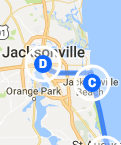 December 20, 2016 – Overcast, 50 degrees
December 20, 2016 – Overcast, 50 degrees
Miles Today: 28
Miles to Date: 20,733
States to Date: 48
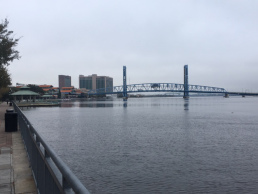 I rode into Jacksonville, the United States’ geographically largest city, on a busy Tuesday morning along miles of commercial strip along US 90 west, across a narrow drawbridge into downtown, and through the downtrodden neighborhood around Edward Waters College. The city is sprawling and nondescript as everyone along my Florida route warned. Poetically, I should have completed my journey in St. Augustine, our nations oldest city. But Jacksonville is more appropriate. It is not a city of the past, it is a city of our present, and as such will have greater bearing on what tomorrow portends.
I rode into Jacksonville, the United States’ geographically largest city, on a busy Tuesday morning along miles of commercial strip along US 90 west, across a narrow drawbridge into downtown, and through the downtrodden neighborhood around Edward Waters College. The city is sprawling and nondescript as everyone along my Florida route warned. Poetically, I should have completed my journey in St. Augustine, our nations oldest city. But Jacksonville is more appropriate. It is not a city of the past, it is a city of our present, and as such will have greater bearing on what tomorrow portends.
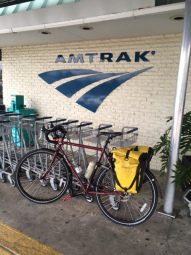 I arrived at the Amtrak station mid-morning, anchored my bike, and spent the day strolling the St. Johns River waterfront, eating Tuesday tacos and sharing a beer with old friends Jan and Mike Golan, who happened to be in the area for a warm weather break. After they dropped me off for my train, ruminations about my year plus experience began to fill my head.
I arrived at the Amtrak station mid-morning, anchored my bike, and spent the day strolling the St. Johns River waterfront, eating Tuesday tacos and sharing a beer with old friends Jan and Mike Golan, who happened to be in the area for a warm weather break. After they dropped me off for my train, ruminations about my year plus experience began to fill my head.
I kept coming back to a quote I leaned at the Harn Art Museum in Gainesville a few days ago. Ron Garon, astronaut, travelled 71 million miles in space. When he returned he said, “Earth is a fragile oasis with many neighborhoods in a very big universe. We must see ourselves as fellow co-laborers on this planet in a war against hunger, poverty, and environmental destruction. The key is ‘we.’”
My journey has been a mere 20,000 miles and change, but I’ve also focused on the illusive ‘we’ that is our nation. ‘We the people’ are an incredible bunch, like no nation that’s ever existed. Yet we have so many challenges: among ourselves and amidst our seven billion neighbors. I’ve learned…
Oops, the conductor just called my train. Time to roll north into the deep dark of this longest night of the year until we reach tomorrow. All aboard!


December 22, 2016
Trip Log – Day 396 – St Augustine FL to Ponte Vedra Beach FL
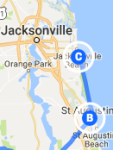 December 19, 2016 – Fog, 60 degrees
December 19, 2016 – Fog, 60 degrees
Miles Today: 33
Miles to Date: 20,705
States to Date: 48
Saint Augustine is a lovely town, even on a grey day. The Visitor’s Center gives a good overview of the city’s history. The architecture is rich and varied, the scale very approachable. My favorite building is the gorgeous Ponce de Leon Hotel, once the flagship of the Flager hospitality chain, now the home of Flager College, named for one of Florida’s early developers.
The ride up A1A is particularly interesting two months after Hurricane Matthew. Along my route I’ve witnessed Katrina reconstruction ten years on, Sandy reconstruction four years later, and now more recent repairs. I pedaled past lines of pick-up trucks for carpenters, plumbers, plasterers, and painters; dump trucks carting beach sand, and bobcats spreading it all over. These ever frequent, ever more powerful weather events are a new economic engine.


December 21, 2016
Trip Log – Day 395 – Gainesville FL to St Augustine FL
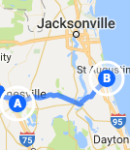 December 18, 2016 – Clouds, 80 degrees
December 18, 2016 – Clouds, 80 degrees
Miles Today: 78
Miles to Date: 20,672
States to Date: 48
Another day of terrific bicycle touring in a state I find much more bike friendly than anticipated. After two hearty bowls of steel cut oats, coffee and oranges right off the tree, I crossed the double helix pedestrian/bike bridge that connects Gainesville to the University of Florida medical center.
I rode sixteen miles along the Hawthorne Trail, skirting Payne’s Prairie, ascending to hardwood hammock and rolling along cypress swamps.
From Hawthorne I enjoyed designated bike paths along FL 20 and 207 all the way to St. Augustine. The tailwind on my final push was handy since my hosts asked me arrive early to go to a party: always a good motivation to pedal hard.
Jackie and Crunch are recent landlubbers; for three years they lived on a boat. The party was at their old marina. I learned about an entirely new way to live from well-tanned folks with few possessions and myriad tales of how they weathered Hurricane Matthew.
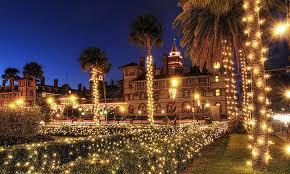 After nightfall my hosts drove me through downtown St. Augustine’s famous Nights of Lights Festival. Jackie, who is a professional tour guide, provided a rich narrative to the sparking illumination.
After nightfall my hosts drove me through downtown St. Augustine’s famous Nights of Lights Festival. Jackie, who is a professional tour guide, provided a rich narrative to the sparking illumination.


December 20, 2016
Trip Log – Day 394 – Gainesville FL
[image error]December 17, 2016 – Sun, 80 degrees
Miles Today: 10
Miles to Date: 20,594
States to Date: 48
Challenging things have occurred during this journey: gale winds, heavy rain, flat tires; but so far, never all at once. I was fortunate that yesterday’s flat was a slow leak that enabled me to roll to my host’s door in a university town full of cycle shops just before a layover day. First thing this morning I put Tom in shipshape, stopped by Super Cool Bikes, got another spare tube (I carry three) and topped off my tire pressure. Then I explored Gainesville.
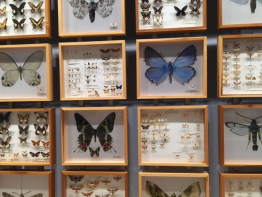 The Florida Museum of Natural History has the largest butterfly collection in the world – more than nine million specimens plus a huge butterfly cage. It also contains timely exhibits about Florida’s ecology. I suppose it makes sense that the last area of our country to take its present shape will be among the first to shrink as climate change continues. Easy come easy go in the land of sinkholes and real estate hucksters.
The Florida Museum of Natural History has the largest butterfly collection in the world – more than nine million specimens plus a huge butterfly cage. It also contains timely exhibits about Florida’s ecology. I suppose it makes sense that the last area of our country to take its present shape will be among the first to shrink as climate change continues. Easy come easy go in the land of sinkholes and real estate hucksters.
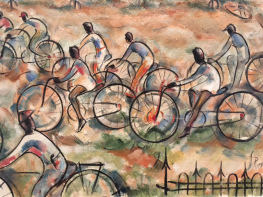 The Harn Art Museum has intriguing exhibits despite few ‘name’ pieces. Shows about Frida Kahlo, African masks, The Guerilla Girls, and photojournalism of the Afghan war are all excellent. Of course I was drawn to Stuart Robert Purser’s whimsical painting of cyclists.
The Harn Art Museum has intriguing exhibits despite few ‘name’ pieces. Shows about Frida Kahlo, African masks, The Guerilla Girls, and photojournalism of the Afghan war are all excellent. Of course I was drawn to Stuart Robert Purser’s whimsical painting of cyclists.
I rode through University of Florida campus on a sleepy Saturday; most students are already gone for break. Downtown was even sleepier, though Gainesville has a lovely public library.
[image error]I headed to my next host’s early as she invited me for early supper before the Veterans for Peace Solstice Concert, an annual event that included some awesome musicians and one of the best Crosby Stills Nash and Young cover bands ever. Gotta love grey haired ex-hippies rocking out to ‘Carry On’ in the Unitarian Church.
Gainesville FL, Lawrence KS, Austin TX, Laramie WY: blue bubbles amid our nation’s political red sea.
 [image error]
[image error]
December 19, 2016
Trip Log – Day 393 – Mayo FL to Gainesville FL
[image error]December 16, 2016 – Sun, 70 degrees
Miles Today: 62
Miles to Date: 20,584
States to Date: 48
After eleven hours of sleep plus a pot of coffee plus a stack of pancakes with a side of bacon, I was ready to roll out of sweet Mayo into a day full of modest surprises.
Crossing the Suwannee River triggered my repertoire of Stephen Foster songs. But I did not expect that Suwanee County would also offer up fifteen miles of dedicated bike path parallel to US 27.
My route took me across I-75 three times. The first was the busy intersection with US 441outside of Alachua. I figured I was in for miles sprawl. Instead, my second crossing was a mere hiccup on NW 140th St, a lovely road lined with stately farms, elegant fences, and rolling pasture. Crossing number three on Millhopper Road was even less obtrusive. I rode through San Felasco Hammock State Preserve, miles of canopy road with another dedicated bike path.
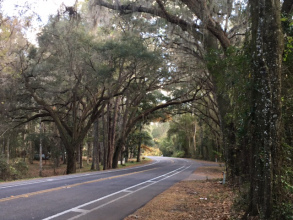 Several people have cautioned me that Florida has the highest cyclist accident rate in the nation. But so far, I have found the state not only physically more beautiful than I expected, but cyclist friendly as well. Let’s hope that continues as I approach the busy Atlantic coast.
Several people have cautioned me that Florida has the highest cyclist accident rate in the nation. But so far, I have found the state not only physically more beautiful than I expected, but cyclist friendly as well. Let’s hope that continues as I approach the busy Atlantic coast.
They’ve also warmed me that because Florida has no vehicle inspection requirements, shoulder debris causes a high number of flats. I got my third flat in four days just before I reached my hosts’ house. Not all surprises are good.



